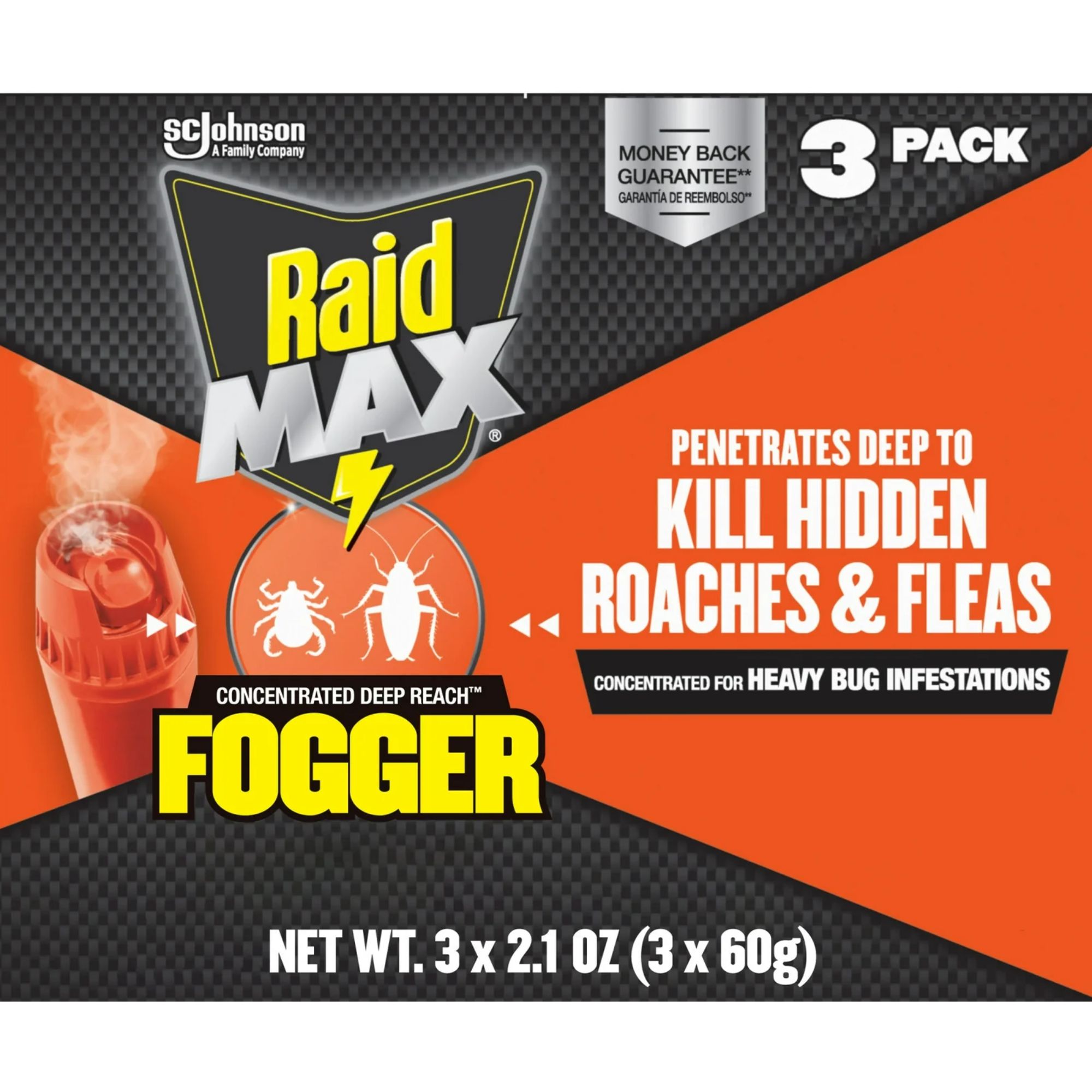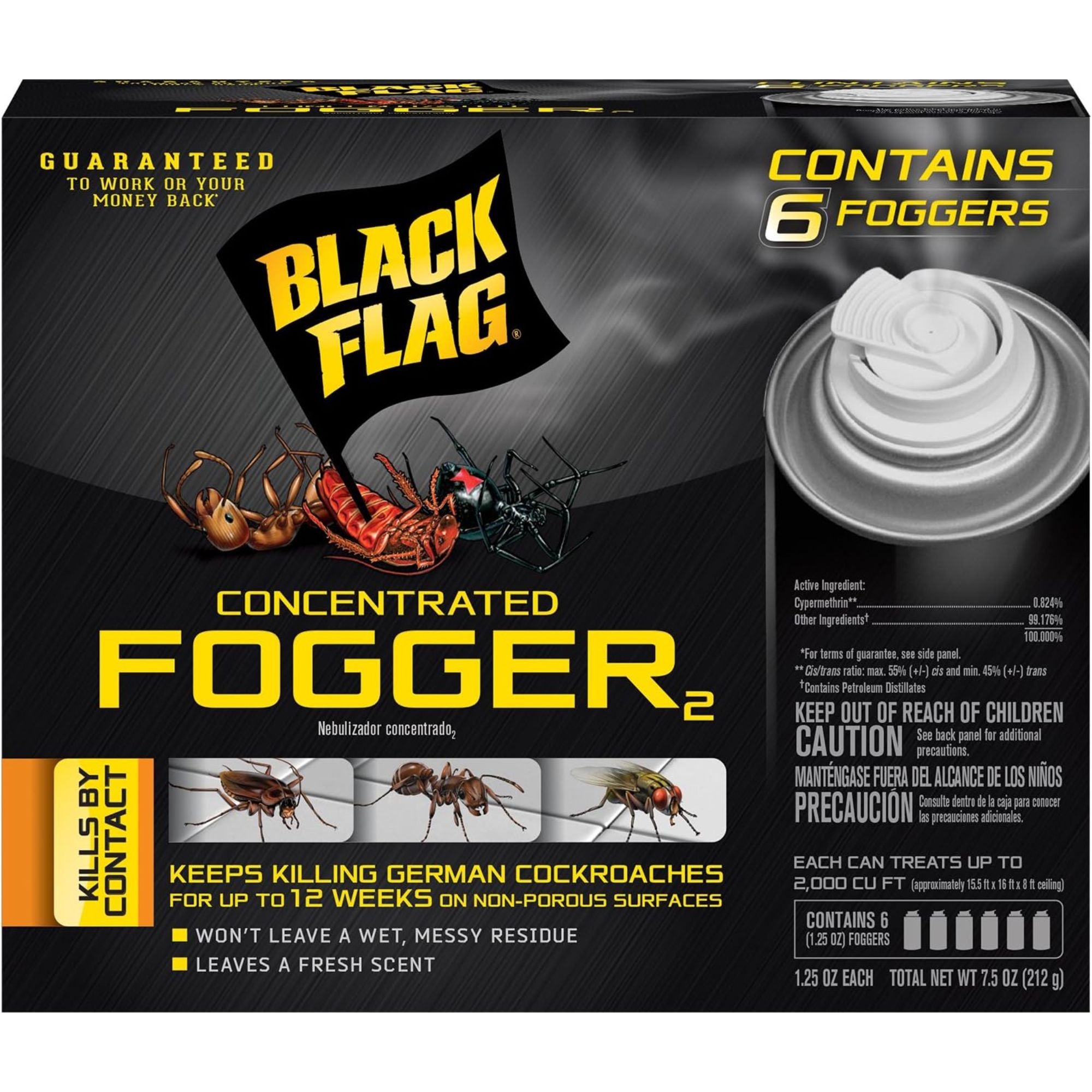Bug bombs 101 – what are they, how to use them, and the must-know safety measures to keep in mind
I'm a pest control expert, and this is my ultimate bug bomb guide


Seraphina Di Mizzurati
You may have heard of bug bombs, but what exactly are they, and how should they be used?
Bug bombs can seem appealing for their ease of use and promise of widespread insect elimination. But understanding how these products work, their safety requirements, and when they’re appropriate is crucial for making an informed decision.
I'm a licensed pest control expert with years of field experience, and here I share how to use bug bombs, the advantages and limitations to be aware of, and the essential precautions everyone must take when using them to deal with indoor pests.
What are bug bombs?
Bug bombs – technically known as total release foggers (TRFs) – are aerosol-based pest control products that release a mist of insecticide into the air, which settles onto floors, furniture, and other exposed surfaces.
These devices are commonly used to eliminate pests quickly and without the need to call in the pros.
Unlike non-toxic pest control techniques, most bug bombs contain pyrethrins or pyrethroids, chemicals that affect the nervous systems of insects, paralyzing or killing them on contact.
Some products also include insect growth regulators (IGRs), which interfere with the pest’s reproductive cycle, preventing larvae from maturing.
Design expertise in your inbox – from inspiring decorating ideas and beautiful celebrity homes to practical gardening advice and shopping round-ups.
While these ingredients are generally effective against soft-bodied insects, they are highly toxic to cats, fish, and even humans if overexposed. This is, obviously, something to bear in mind when living with pets and children.
So, can you use a bug bomb yourself? As a pest control expert at Braman Termite & Pest Elimination, my answer is technically, yes – most bug bombs are sold over-the-counter and marketed for consumer use. However, that doesn’t mean they’re simple to use or risk-free.
If you choose to use one, you must carefully follow the manufacturer’s instructions, wear protective clothing if re-entering too soon [such as the AirGearPro Reusable Respirator Mask available at Amazon], and understand that this should be just one part of a broader pest management plan, to avoid making any common pest control mistakes.
How to use a bug bomb

It's imperative to closely follow safety instructions.
I always stress the importance of following the label to the letter. Here's how to safely and effectively use a bug bomb:
- Prepare the area: After reading the product label carefully, measure the room size [using a tape measure, such as the bestselling Hyper Tough 25 Foot Tape Measure available at Amazon] to determine how many bug bombs are needed. Using more than recommended won’t improve effectiveness and increases the likelihood of chemical hazards. Next, remove or cover all food, dishes, utensils, and sensitive electronics, as the last thing you want is for the released chemicals to infiltrate and contaminate your food and crockery. Remember to turn off all ignition sources: stoves, heaters, pilot lights, and electrical appliances, as many foggers contain flammable propellants.
- Application: Once the infested area has been correctly prepared, place the bug bomb in the center of the room, elevated slightly if possible, for better dispersion. Activate the canister and exit immediately, closing doors behind you. Keep the area clear of all people and pets for the duration specified.
- Post-application: Ventilate thoroughly upon return. Open all windows and run your best fans to disperse lingering fumes. Wipe down any surfaces that may come into contact with skin or food, especially countertops, tables, and children's toys. This can be done with an all-purpose spray, such as the non-toxic Method All-Purpose Cleaner available at Walmart, or Clorox Disinfecting Wipes, available at Amazon.
The benefits and drawbacks of using bug bombs

'Like any pest control method, bug bombs come with trade-offs.'
Like any pest control method, bug bombs come with trade-offs. While they can offer fast, visible results for certain types of infestations, their limitations are just as important to understand, especially if you’re relying on them as your main solution to get rid of cluster flies, get rid of fleas, or deal with almost any other kind of pest.
One of their biggest draws is sheer convenience. These products are designed with everyday users in mind – there’s no need for professional tools or special training to operate them, making them a tempting solution for tackling pests quickly.
They’re also well-suited to open spaces. If you're dealing with pests in a loft, basement, like getting rid of spiders in a basement, or a small attic with minimal furniture or clutter, a fogger [such as the Black Flag Propane Insect Fogger available at Amazon] can help blanket the area with insecticide, reaching exposed insects effectively.
And for many households, affordability is a factor – bug bombs are widely available in supermarkets and hardware stores, and typically cost far less than a professional pest control visit, effective even when you've spotted signs it's time to call professional pest control in.
However, the drawbacks are just as important to consider. Foggers release insecticides into the air, but they don’t travel far beyond what’s visible.
That means they’re unlikely to reach into wall cavities, behind baseboards, or beneath heavy furniture, which are exactly where many pests like cockroaches and bed bugs tend to nest for hidden pest harborage.
There are also serious safety concerns to keep in mind. Overexposure to the chemicals in bug bombs can cause respiratory irritation, skin reactions, and even more serious health issues, particularly for young children, pets, or anyone with asthma or allergies.
Do bug bombs really work?

Bug bombs are a reliable solution when used correctly.
In my experience, bug bombs work – but only under the right conditions.
They’re effective against exposed insects, like when keeping flies out of the house or dealing with a flea infestation, but less so at banishing cockroaches and getting rid of bed bugs, which often hide in unreachable areas.
I’ve seen many cases where homeowners used foggers expecting total eradication, only to find the infestation returned a few days later.
For a more permanent pest control, bug bombs should be combined with targeted methods like homemade bug sprays, baits, and exclusion practices.
In more severe cases, hiring a licensed pest control technician is the most efficient and safest path.
Can you sleep on the bed after a bug bomb?

Proper decontamination after using a bug bomb is crucial before sleeping in the same room
This is a question I get often, and my answer is always the same: Not without proper decontamination.
Before fogging, you should either remove bedding and pillows from the room or cover them with airtight plastic, such as the Guardmax Zippered Mattress Encasement available at Amazon.
After treatment, wash all bedsheets and bedding in hot water and detergent. Chemical residues can linger, and direct skin contact can cause irritation or allergic reactions.
If in doubt, err on the side of caution – your health is not worth the risk.
What to shop
All prices were correct at the time of publication.

Ideal for treating large areas affected by fleas, ants, and spiders, this fogger is a popular choice for households seeking extended protection. It kills on contact and leaves a residue that continues working for up to two months. The added odor neutralizer makes the smell more tolerable during post-treatment airing out.

This well-known option from Raid is formulated to target pests in cracks, crevices, and hidden spots. It’s particularly effective against roaches, ants, and silverfish, and is designed to avoid leaving a wet or messy residue on surfaces. The compact design is suited to medium-size rooms and more targeted applications.

An excellent choice for quick knockdowns of flying insects, this fogger works fast against houseflies, mosquitoes, and gnats, while also helping reduce crawling insect populations. It’s safe for use in homes, apartments, and garages—just be sure to vacate and ventilate thoroughly afterward.
FAQs
Do you have to wash everything after a bed bug bomb?
'Yes, it's a good idea to wash any exposed fabrics, including bedding, clothing, and curtains, after using a bed bug bomb,' says Natasha. 'While many foggers leave minimal residue, it's best to err on the side of caution, especially for items that come into direct contact with your skin.
'Always follow the manufacturer’s instructions for post-treatment cleanup.'
How long do you have to be out of the house after a bug bomb?
Typically, you should stay out of your home for at least two to four hours after deploying a bug bomb. This allows the insecticide to settle and ensures proper ventilation before you return. Check the label on the specific product you’re using, as re-entry times can vary.
Meet our expert

Natasha is the technical director at Braman, a board-certified entomologist, and a member of the Entomological Society of America. She earned her bachelor’s degree in entomology at the University of Florida in 2009 and received her master’s degree in entomology at the University of Arkansas in 2013.
Bug bombs can play a role in pest management, but they’re not a cure-all. Used properly, they can help reduce visible insect populations. Used incorrectly, they can put your health and safety at risk.
As a pest control professional, I recommend approaching bug bombs as a supplemental measure, never the only one.
If you're dealing with a persistent or severe infestation, don’t rely solely on retail solutions. A licensed professional can provide a thorough assessment, a customized treatment plan, and peace of mind.
Curious about more pest control questions? These pest control myths have been debunked by pros.

Natasha is the Technical Director at Braman, she is a board-certified entomologist and a member of the Entomological Society of America. She earned her bachelor’s degree in entomology at the University of Florida in 2009 and received her master’s degree in entomology at the University of Arkansas in 2013.
- Seraphina Di MizzuratiContributing Editor
You must confirm your public display name before commenting
Please logout and then login again, you will then be prompted to enter your display name.